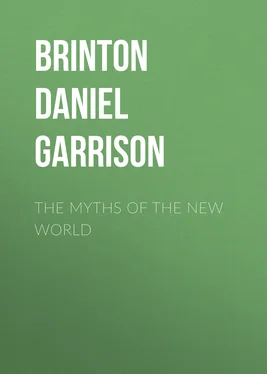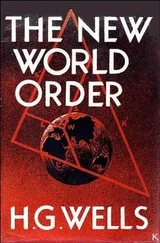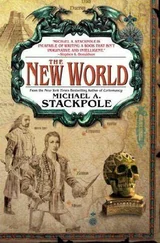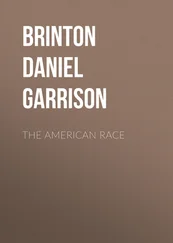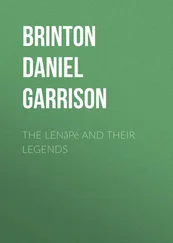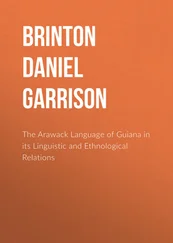Daniel Brinton - The Myths of the New World
Здесь есть возможность читать онлайн «Daniel Brinton - The Myths of the New World» — ознакомительный отрывок электронной книги совершенно бесплатно, а после прочтения отрывка купить полную версию. В некоторых случаях можно слушать аудио, скачать через торрент в формате fb2 и присутствует краткое содержание. Жанр: foreign_prose, История, Старинная литература, Мифы. Легенды. Эпос, foreign_edu, foreign_antique, на английском языке. Описание произведения, (предисловие) а так же отзывы посетителей доступны на портале библиотеки ЛибКат.
- Название:The Myths of the New World
- Автор:
- Жанр:
- Год:неизвестен
- ISBN:нет данных
- Рейтинг книги:5 / 5. Голосов: 1
-
Избранное:Добавить в избранное
- Отзывы:
-
Ваша оценка:
- 100
- 1
- 2
- 3
- 4
- 5
The Myths of the New World: краткое содержание, описание и аннотация
Предлагаем к чтению аннотацию, описание, краткое содержание или предисловие (зависит от того, что написал сам автор книги «The Myths of the New World»). Если вы не нашли необходимую информацию о книге — напишите в комментариях, мы постараемся отыскать её.
The Myths of the New World — читать онлайн ознакомительный отрывок
Ниже представлен текст книги, разбитый по страницам. Система сохранения места последней прочитанной страницы, позволяет с удобством читать онлайн бесплатно книгу «The Myths of the New World», без необходимости каждый раз заново искать на чём Вы остановились. Поставьте закладку, и сможете в любой момент перейти на страницу, на которой закончили чтение.
Интервал:
Закладка:
They corresponded to the four gods Bacab, who in the Yucatecan mythology were supposed to stand one at each corner of the world, supporting, like gigantic caryatides, the overhanging firmament. When at the general deluge all other gods and men were swallowed by the waters they alone escaped to people it anew. These four, known by the names of Kan, Muluc, Ix, and Cauac, represented respectively the east, north, west, and south, and as in Oriental symbolism, so here each quarter of the compass was distinguished by a color, the east by yellow, the south by red, the west by black, and the north by white. The names of these mysterious personages, employed somewhat as we do the Dominical letters, adjusted the calendar of the Mayas, and by their propitious or portentous combinations was arranged their system of judicial astrology. They were the gods of rain, and under the title Chac, the Red Ones, were the chief ministers of the highest power. As such they were represented in the religious ceremonies by four old men, constant attendants on the high priest in his official functions. 91 91 Diego de Landa, Rel. de las Cosas de Yucatan , pp. 160, 206, 208, ed. Brasseur. The learned editor, in a note to p. 208, states erroneously the disposition of the colors, as may be seen by comparing the document on p. 395. This dedication of colors to the cardinal points is universal in Central Asia. The geographical names of the Red Sea, the Black Sea, the Yellow Sea or Persian Gulf, and the White Sea or the Mediterranean, are derived from this association. The cities of China, many of them at least, have their gates which open toward the cardinal points painted of certain colors, and precisely these four, the white, the black, the red, and the yellow, are those which in Oriental myth the mountain in the centre of Paradise shows to the different cardinal points. (Sepp, Heidenthum und Christenthum , i. p. 177.) The coincidence furnishes food for reflection.
In this most civilized branch of the red race, as everywhere else, we thus find four mythological characters prominent beyond all others, giving a peculiar physiognomy to the national legends, arts, and sciences, and in them once more we recognize by signs infallible, personifications of the four cardinal points and the four winds.
They rarely lose altogether their true character. The Quiché legends tell us that the four men who were first created by the Heart of Heaven, Hurakan, the Air in Motion, were infinitely keen of eye and swift of foot, that “they measured and saw all that exists at the four corners and the four angles of the sky and the earth;” that they did not fulfil the design of their maker “to bring forth and produce when the season of harvest was near,” until he blew into their eyes a cloud, “until their faces were obscured as when one breathes on a mirror.” Then he gave them as wives the four mothers of our species, whose names were Falling Water, Beautiful Water, Water of Serpents, and Water of Birds. 92 92 Le Livre Sacré des Quichés , pp. 203-5, note.
Truly he who can see aught but a transparent myth in this recital, is a realist that would astonish Euhemerus himself.
There is in these Aztec legends a quaternion besides this of the first men, one that bears marks of a profound contemplation on the course of nature, one that answers to the former as the heavenly phase of the earthly conception. It is seen in the four personages, or perhaps we should say modes of action, that make up the one Supreme Cause of All, Hurakan, the breath, the wind, the Divine Spirit. They are He who creates, He who gives Form, He who gives Life, and He who reproduces. 93 93 The analogy is remarkable between these and the “quatre actes de la puissance generatrice jusqu’à l’entier developpément des corps organisés,” portrayed by four globes in the Mycenean bas-reliefs. See Guigniaut, Religions de l’Antiquité , i. p. 374. It were easy to multiply the instances of such parallelism in the growth of religious thought in the Old and New World, but I designedly refrain from doing so. They have already given rise to false theories enough, and moreover my purpose in this work is not “comparative mythology.”
This acute and extraordinary analysis of the origin and laws of organic life, clothed under the ancient belief in the action of the winds, reveals a depth of thought for which we were hardly prepared, and is perhaps the single instance of anything like metaphysics among the red race. It is clearly visible in the earlier portions of the legends of the Quichés, and is the more surely of native origin as it has been quite lost on both their translators.
Go where we will, the same story meets us. The empire of the Incas was attributed in the sacred chants of the Amautas, the priests assigned to take charge of the records, to four brothers and their wives. These mythical civilizers are said to have emerged from a cave called Pacari tampu , which may mean “the House of Subsistence,” reminding us of the four heroes who in Aztec legend set forth to people the world from Tonacatepec, the mountain of our subsistence; or again it may mean—for like many of these mythical names it seems to have been designedly chosen to bear a double construction—the Lodgings of the Dawn, recalling another Aztec legend which points for the birthplace of the race to Tula in the distant orient. The cave itself suggests to the classical reader that of Eolus, or may be paralleled with that in which the Iroquois fabled the winds were imprisoned by their lord. 94 94 Müller, Amer. Urreligionen , p. 105, after Strahlheim, who is, however, no authority.
These brothers were of no common kin. Their voices could shake the earth and their hands heap up mountains. Like the thunder god, they stood on the hills and hurled their sling-stones to the four corners of the earth. When one was overpowered he fled upward to the heaven or was turned into stone, and it was by their aid and counsel that the savages who possessed the land renounced their barbarous habits and commenced to till the soil. There can be no doubt but that this in turn is but another transformation of the Protean myth we have so long pursued. 95 95 Müller, ubi supra , pp. 308 sqq., gives a good résumé of the different versions of the myth of the four brothers in Peru.
There are traces of the same legend among many other tribes of the continent, but the trustworthy reports we have of them are too scanty to permit analysis. Enough that they are mentioned in a note, for it is every way likely that could we resolve their meaning they too would carry us back to the four winds. 96 96 The Tupis of Brazil claim a descent from four brothers, three of whose names are given by Hans Staden, a prisoner among them about 1550, as Krimen, Hermittan, and Coem; the latter he explains to mean the morning, the east ( le matin , printed by mistake le mutin , Relation de Hans Staden de Homberg , p. 274, ed. Ternaux-Compans, compare Dias, Dicc. da Lingua Tupy , p. 47). Their southern relatives, the Guaranis of Paraguay, also spoke of the four brothers and gave two of their names as Tupi and Guarani, respectively parents of the tribes called after them (Guevara, Hist. del Paraguay , lib. i. cap. ii., in Waitz). The fourfold division of the Muyscas of Bogota was traced back to four chieftains created by their hero god Nemqueteba (A. von Humboldt, Vues des Cordillères , p. 246). The Nahuas of Mexico much more frequently spoke of themselves as descendants of four or eight original families than of seven (Humboldt, ibid. , p. 317, and others in Waitz, Anthropologie , iv. pp. 36, 37). The Sacs or Sauks of the Upper Mississippi supposed that two men and two women were first created, and from these four sprang all men (Morse, Rep. on Ind. Affairs , App. p. 138). The Ottoes, Pawnees, “and other Indians,” had a tradition that from eight ancestors all nations and races were descended (Id., p. 249). This duplication of the number probably arose from assigning the first four men four women as wives. The division into clans or totems which prevails in most northern tribes rests theoretically on descent from different ancestors. The Shawnees and Natchez were divided into four such clans, the Choctaws, Navajos, and Iroquois into eight, thus proving that in those tribes also the myth I have been discussing was recognized.
Интервал:
Закладка:
Похожие книги на «The Myths of the New World»
Представляем Вашему вниманию похожие книги на «The Myths of the New World» списком для выбора. Мы отобрали схожую по названию и смыслу литературу в надежде предоставить читателям больше вариантов отыскать новые, интересные, ещё непрочитанные произведения.
Обсуждение, отзывы о книге «The Myths of the New World» и просто собственные мнения читателей. Оставьте ваши комментарии, напишите, что Вы думаете о произведении, его смысле или главных героях. Укажите что конкретно понравилось, а что нет, и почему Вы так считаете.
